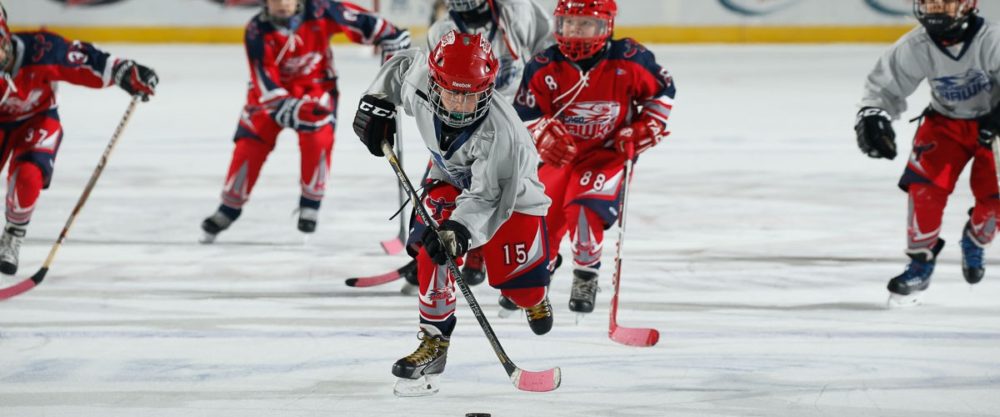There are few sports with the same unique physical demands as youth ice hockey. Brendan Shanahan explained it this way when asked by a reporter “Is hockey hard?”
“Is hockey hard? I don’t know, you tell me. We need to have the strength and power of a football player, the stamina of a marathon runner, and the concentration of a brain surgeon. But we need to put all this together while moving at high speeds on a cold and slippery surface while 5 other guys use clubs to try and kill us. Oh yeah, did I mention that this whole time we’re standing on blades 1/8 of an inch thick? Is ice hockey hard? I don’t know, you tell me. Next question.”
From this quote alone you could have guessed that many of the injuries sustained playing ice hockey are contact injuries. Not surprisingly, the majority of injuries occur due to contact with another player, the boards, or attempting to block a shot. Many of these factors are not modifiable and certain risk factors have been associated with increased risk of contact injury. Thankfully, hockey initiatives have led to decreased contact injuries in youth leagues. Other things that can be done to reduce the chances of sustaining an injury due to contact in youth ice hockey include
- Avoiding early sport specialization.
- Ensure adequate nutrition and rest. Athletes who rated themselves as having low energy levels or higher levels of fatigue had higher rates of injury in high school ice hockey.
- Practice matters! Athletes who had much higher time spent in games compared to practice had higher levels of injury.
- Strength and conditioning. Athletes with lower body weight tend to have higher injury rates. Youth athletes may be physically immature and compete against individuals who are significantly more physically developed than them.
Overuse Injuries of the Hip in Youth Ice Hockey
Another unique demand of hockey is the amount of range of motion required throughout the hip joint and the muscular control needed in what would typically be considered awkward positions. The hockey stride is a repetitive motion alternating between repetitive hip flexion and internal rotation followed by hip extension, abduction and external rotation. Running only requires small amounts of hip flexion and hip extension without any movement in the other planes of motion. These unique requirements lead to hip injuries that are more prevalent in hockey players.
Many of the non contact injuries acquired in youth hockey are at the hip joint. They typically include groin strains or sports hernias and bony injuries around the hip joint. Luckily there are some things that can be done to help reduce non contact hip injuries for kids playing ice hockey.
Early Sports Specialization & Youth Hockey Injuries
As described above, avoiding early sport specialization is important to minimize injury risk. There is a great deal of stress placed on the hip through repetitive skating. Therefore, avoiding year round skating while the athlete is still growing may help reduce the incidence of growth plate injuries and other bony abnormalities. Taking time off from one sport to learn new motor skills and athletic abilities will ultimately translate to improved performance and reduce the chance of an overuse injury at the hip. A strength and conditioning or prehabilitation program designed at improving hip and core muscular strength and endurance as well as hip mobility specific to the demands of hockey can help reduce injury.
Conclusion
Hip and groin pain can be very challenging and limiting for athletes and often becomes a recurrent injury. It can be difficult to distinguish between sports hernias, adductor strains, or bony injuries within the hip joint itself. If you are experiencing hip pain, see a rehabilitation expert who can help you treat this pain and improve your performance.
References
- Smith AM, Stuart MJ, Wiese-Bjornstal DM et al. Predictors of injury in ice hockey players. A multivariate, multidisciplinary approach. Am J Sports Med 1997;25:500–7.
- Popkin CA, Schulz BM, Park CN, Bottiglieri TS, Lynch TS. Evaluation, management and prevention of lower extremity youth ice hockey injuries. Open Access J Sports Med. 2016;7:167–176.

